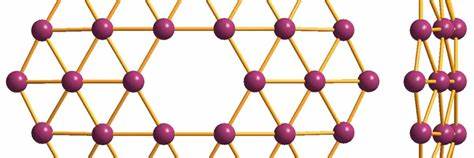Posted inBiology Chemistry Health Technology
Super Material Could Have More Potential Than Graphene
The Penn State study highlights the innovative ways in which chirality can enhance borophene's functionality. Chirality allows atoms in borophene to rearrange into various configurations, creating different structures much like the concept of left and right hands. This flexibility has significant implications for medical technology, where the ability to create varying structures from the same base material is extremely valuable
